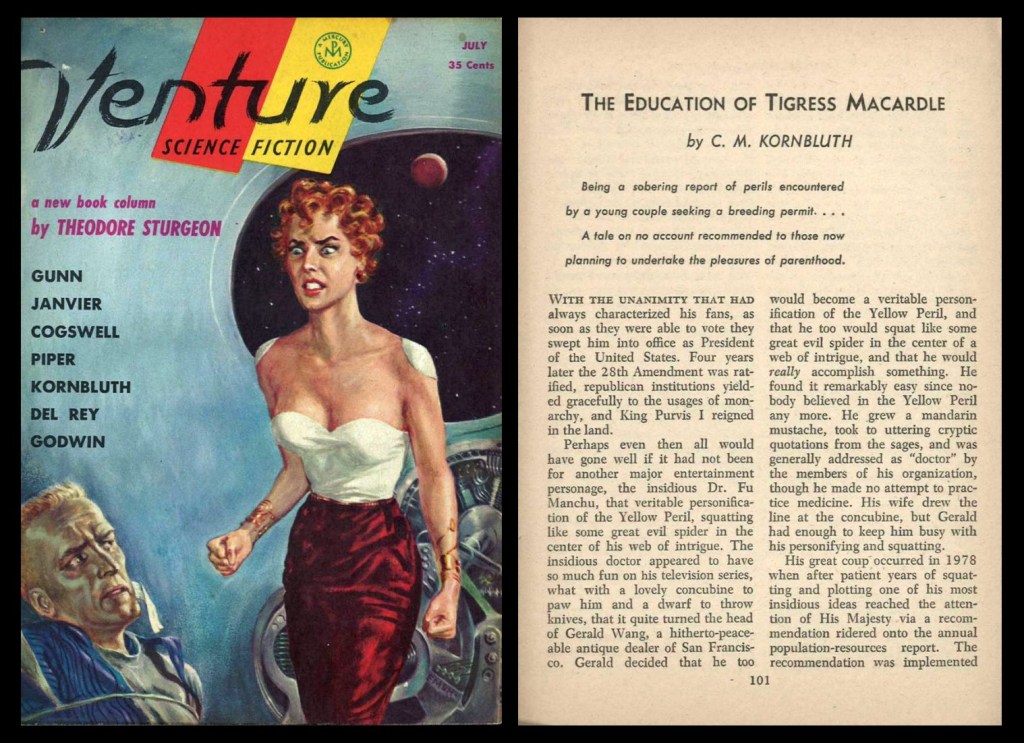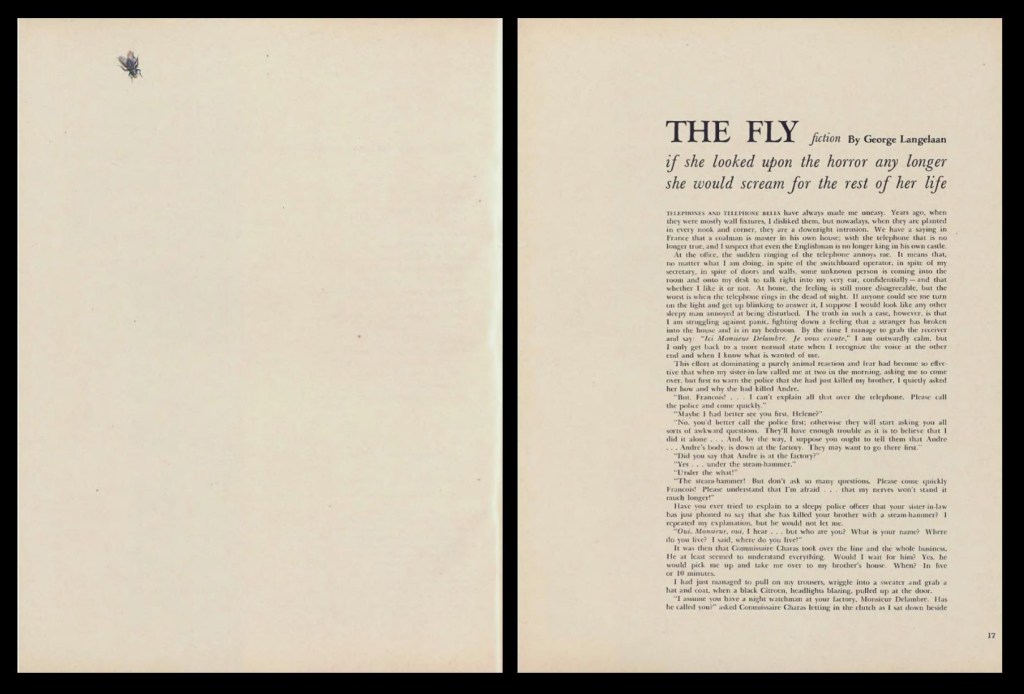
Group Read 72: The Best Science Fiction Stories of 1957
“Profession” by Isaac Asimov #11 of 20 (Read, Listen)
“Profession” isn’t one of Asimov’s well-known stories. It’s not a Foundation or Robot story. The setting is Earth. “Profession” is an SF idea story, and unfortunately, not a particularly exciting one. The idea of writing knowledge directly to the brain is interesting, but how and why it’s used in “Profession” isn’t believable.
Asimov usually wrote idea stories. He seldom developed stories with drama or humor or even satire. I seldom felt anything for most of his characters. “Profession” is about George Platen who wants to become a computer programmer and be sent to another planet. He lives in the future where Earth has colonized many star systems, and they need professionally trained people. Earth has developed a way to educate people by writing directly to the brain, and they export people with extremely specific technical skills. Evidently, Earth has a monopoly on this brain writing technology.
The problem is, one person in 10,000 have a brain that can’t be written to, and they are sent to special institutions where they are told to read and study whatever they want. George is one of these people and is crushed that he can’t achieve his professional dream.
Unfortunately, “Profession” is a short novella, much too long for the solution Asimov eventually gives us. I won’t spoil it though, but I will say Asimov has to stack the deck to pull it off. It’s an unsatisfying ending because the original plot logic is now seen as faulty. In this future, the only education people get is by mind writing. No one wants to put years of studying into any subject because they hate it when they can’t learn instantly.
In other words, Asimov assumes humans will act differently in the future and I don’t think they will, and that spoils his whole premise for the story.
I don’t even remember why I put this story on the list. It did not have even one citation of CSFquery. I just checked and I added “Profession” because Rich Horton picked it in his Hugo nominations for 1957. He even says, “My vote in this category goes to Asimov’s ‘Profession,’ really a quite strong novella.” Just goes to show you how people’s reading reactions are different.
Of the possibilities Rich lists, I would have picked “The Lineman” by Walter M. Miller, Jr. It has some modern-day political correctness problems, but it’s exciting and dramatic. “The Lineman” is about construction crews on the Moon being distracted by a rocket full of prostitutes. You can read it here. Here’s all the novellas that Rich was considered for 1957:
- “Profession”, by Isaac Asimov (Astounding, July)
- “The Night of Light”, by Philip José Farmer (F&SF, June)
- “The Last Canticle”, by Walter M. Miller, Jr. (F&SF, February)
- “The Lineman”, by Walter M. Miller, Jr. (F&SF, August)
- “Lone Star Planet”, by H. Beam Piper and John J. McGuire (Fantastic Universe, March)
- “Get Out of my Sky”, by James Blish (Astounding, January, and February)
- “Nuisance Value”, by Eric Frank Russell (Astounding, January)
For sheer storytelling, I like all those other writers far better than Asimov. When I was young, Asimov was very appealing because of his ideas, but I never realized how unexciting his stories were back then. He does create interesting setups, but his characters are just chess pieces he moves around to act out an idea. And now that I’m older, I realize most of those ideas weren’t particularly good. Very few of Asimov’s stories had any kind of emotional punch. The one that I remember that does is “The Ugly Little Boy.” It has quite a punch. I also felt some sympathy for the characters in The Naked Sun, but that’s because I read it when I was going through an agoraphobic phase due to a heart arrythmia.
“Profession” does have some neat ideas, but they are tortured to create its plot.
The thing I like best about “Profession” is the Kelly Freas cover. If you loved “Profession” please say so in a comment. Or comment if you agree with me.

James Wallace Harris, 4/5/24













